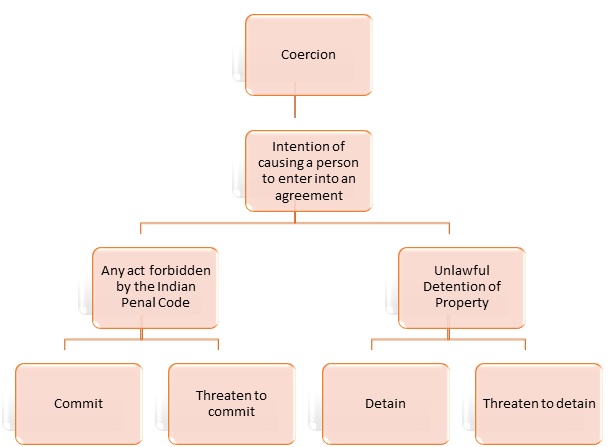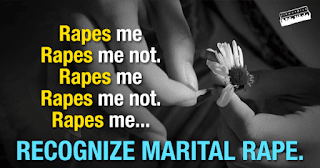Legality of prostitution- A grey area!
According to google, prostitution means the practice or
occupation of engaging in sexual activity with someone for payment. But then
you refer to various online/offline dictionaries and papers from scholars, who
generally define it as paid indiscriminate intercourse or giving up to
indiscriminate lewdness for money. The way the meaning has been swayed from
paid coitus to indiscriminate lewdness itself explains the ignominy that is
associated with this occupation.
With the stigma that is attached to this industry, it is
surprising that it is the oldest occupation in the world with its roots tracing
back to ancient Babylon[1].
References to prostitution can also be found in Chanakya’s Arthashastra and the Vedas
which actually imply that prostitution was a well-acknowledged mainstream practice,
and a kind of art form for the royals to enjoy contrary to the popular belief
that it was an underground activity[2]. Indian
mythology even suggests the existence of high-class prostitutes in the form of
celestial gods like Menaka, Urvashi, Rambha, and so on[3].
The prevalent practice of devadasi
and concubinage further shows more evidence of the existence of a fancy profession of prostitution since times unknown.[4]
Today, Prostitution in India is approximately $8.4
Billion worth industry[5],
some of which involve those sex-workers who have no other option but to choose
this profession, while others include those who are forced into this industry
through sex-trafficking. Prostitution in India is governed by Immoral Trafficking (prevention) Act, 1956
along with certain provisions of the Indian
Penal Code, 1860.
PC: https://www.sbs.com.au/guide/article/2018/02/27/how-one-law-changed-everything-about-prostitution-canada
IMMORAL
TRAFFICKING PREVENTION ACT, 1956
This Act is a perfect example of the general proposition
that “Law lies within the grey areas”. It is not so progressive as to
completely legalize prostitution and conversely it also does not stipulate a
blanket ban on the profession. It leaves the position hanging somewhere in
between. Under this Act, prostitution per se is not an offence, but the
activities that go along with it are, for e.g. running a brothel, soliciting
for clients, depending on the money earned by prostitution, etc.
The three main provisions which need to be discussed are:
- Criminalisation of the running of a brothel (Section 3) - The Act criminalises brothels which houses two or more prostitutes. So, if a person wants to engage in the activity of prostitution legally, then he/she will have to do it alone.
- Punishment for living on the earnings of prostitution (Section 4) - This provision provides that any person above the age of 18 years who is found to be knowingly living on the earnings of prostitution would be a deemed criminal and would be punished according to this section.
- Prostitution in the vicinity of public places (Section7) - In addition to working alone, the Act also prohibits sex-workers to work within 200 m radius of any public place mentioned in the section or notified by the commissioner later on.
The conclusion that can be derived from these provisions is
that a sex-worker has to work alone, in a distant isolated lonely location,
which only drives her to become more susceptible towards abuse and violence.
The old parents of a sex-worker who cannot find another mode of earning their
livelihood and depend on their offspring to support them become liable for
punishment.
There are three solutions to improve the position of sex-workers in India:
- Criminalization- Firstly, to imagine that a humungous industry like prostitution will evaporate into thin air is preposterous. Secondly, this solution would not make the current locus of sex-workers better. In fact, it would be worsened as millions of women would go jobless, affecting the unemployment rate, poverty rate, hunger rate, education rate, and the entire economy as a whole.
- Partial Decriminalization- India has adopted this way by not criminalising prostitution per se but criminalising every other activity associated with it.
- Legalisation- With legalisation, the status of sex-workers can get a lot better than it is now. Complete legalisation does not mean promotion of the industry, or waving around flags and producing advertisements insisting people to go participate in such acts; it means giving the prostitution industry a regulated legal recognition.
PC: https://policyoptions.irpp.org/magazines/may-2018/finding-a-middle-ground-on-prostitution/
LEGALISATION
OF PROSTITUTION
According to the Law Commission of India-
Sixty-Fourth Report (The Suppression of Immoral Traffic in Women and Girls Act,
1956)[6], there are four
types of conduct in the society,
I.
approved by law;
II.
permitted without approval or disapproved by law;
III.
disapproved but not prohibited by law; and
IV.
prohibited by law.
Prostitution partly falls within the third and the fourth
type i.e. it has limited legality. The trend of demanding legalisation of
prostitution is to bring it into the first category, so that prostitution can
be legalised and regulated in India, like it is in countries like Canada,
Germany, and The Netherlands.
The question that arises is- why should it be brought under
the first type? That is because with the recognition that prostitution gets
currently, it still does not protect the sex-workers in a brothel, who have no
other choice but to work there, since they can’t afford to work separately. The
gundas of the society target such
sex-workers working in a brothel for theft, fraud, rape and other mischief.
They take advantage of the fact that the victims would not be able to file a complaint
to the police, since they are themselves involved in an “illegal” industry.
Currently, sex-workers fall into the unorganised labour
sector with no rights. They are abused by their brothel owners or their clients
and they can’t complain because if they do, they themselves would be the ones
to be targeted first. Legalisation would protect sex-workers as they will have
access to the rights promised under the Constitution of India including the
right to equality, the right to life and dignity, and the right to choose their
own vocation.
Legal validation would also endorse the health of the sex
workers, as they will have access to medical facilities and the activity of paid
coitus would be structured according to the proper medical regulations issued
by the Government, like use of condoms for safety, mandatory HIV tests, etc.
An additional benefit with legalisation would be the
effective organisation of over millions of sex-workers simultaneously bringing
them under the tax net as has been done in the Netherlands (the first country to
legalise and regulate prostitution around 2000)[7] which
will result in better economic growth of the country.
PC: https://chicago.cbslocal.com/2017/01/18/chicago-protesters-demand-legalization-of-sex-work/
CONCLUSION
Here is a simple comparison to wrap up the argument - you are
sitting in an air-conditioned house being privileged with high-quality
education, having the freedom to choose your own occupation and fight for your
rights if they are violated, while there are sex-workers out there being robbed
by a thug or being abused by her brothel owner having no option but to endure
it. The sex-workers is an outcast community who have the same needs and
desires as the rest of us, and demand the right of equality to enjoy basic
human rights that are enjoyed by us. Don’t they deserve at least that?
While
legalisation will not resolve the problems faced by this community in totality
like the regressive mentality of people or the stigma attached to the
profession, however, provided the surreptitious and unregulated nature of the
industry, this solution will certainly operate to do some damage control.
BY
LAW
VASTUTAH
References
[1]Sathya Narayanan, Prostitution: A Brief History,
Speakingtree.in (12/02/2018), Available at https://www.speakingtree.in/allslides/prostitution-a-brief-history/what-are-devadasi-524131
[2]Sara Sethia, The Legality of
Sex Work in India, One Future Collective (04/10/2018), Available at http://onefuturecollective.org/law-and-gender-the-legality-of-sex-work-in-india/
[3]Pallavi Thakur, Tradition of
Devadasi: The sacred prostitute!, Speakingtree.org(12/11/2014), Available
at https://www.speakingtree.in/allslides/prostitution-in-ancient-india
[4]Dr. Smt. S.R. Sarode, Historical Study Of Prostitution Trade In
India : Past And Present, Available at http://vcckarad.com/Minor%20Research%20Project%20on%20HISTORICAL%20STUDY%20OF%20PROSTITUTION%20TRADE%20IN%20INDIA%20%20%20PAST%20AND%20PRESENT.pdf
[5]Palash Krishna Mehrotra, Legalisation of
prostitution will help protect vulnerable women in India, Daily Mail
(14/10/2014)
[6] The Law Commission of India: Sixty Fourth Report, The Suppression of Immoral Traffic in Women
and Girls Act, 1956, Chapter I: Introduction, March 1975
[7] Harrison Jacobs, Prostitution
is legal in countries across Europe, but it's nothing like what you think,
Business Insider(13/03/2019) Available at https://www.businessinsider.com/prostitution-is-legal-in-countries-across-europe-photos-2019-3#:~:text=In%202000%2C%20the%20Netherlands%20was%20one%20of%20the,24%20April%202004.%20Horacio%20Villalobos%2FCorbis%20via%20Getty%20Images







Comments
Post a Comment